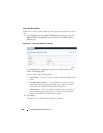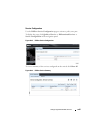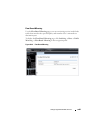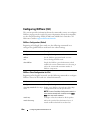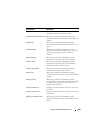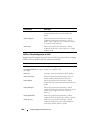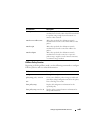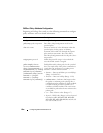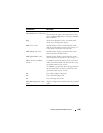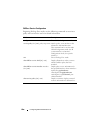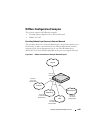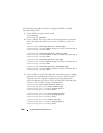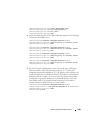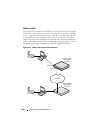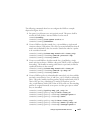
1304 Configuring Differentiated Services
DiffServ Policy Attributes Configuration
Beginning in Privilege Exec mode, use the following commands to configure
policy attributes and view related information.
CLI Command Description
configure Enter global configuration mode.
policy-map
policy-map-name
Enter Policy Map Configuration mode for the
specified policy.
class
class-name
Create an instance of a class definition within the
specified policy for the purpose of defining
treatment of the traffic class through subsequent
policy attribute statements. Also enters Policy-
Class-Map Configuration mode for the policy-class-
map instance.
assign-queue
queue-id
Modify the queue ID (range: 0–6) to which the
associated traffic stream is assigned.
police-simple {
datarate
burstsize
conform-action
{drop | set-cos-transmit
cos
|
set-prectransmit
cos
| set-dscp-
transmit
dscpval
| transmit}
[violateaction {drop | set-cos-
transmit
cos
| set-prec-
transmit
cos
| set-dscp-
transmit
dscpval
| transmit}]}
Establish the traffic policing style for the specified
class. The simple form of the police command uses
a single data rate and burst size, resulting in two
outcomes: conform and nonconform.
•
datarate
— Data rate in kilobits per second (kbps).
(Range: 1–4294967295)
•
burstsize
— Burst size in Kbps (Range: 1–128)
•
conform action
— Indicates what happens when
the packet is conforming to the policing rule: it
could be dropped, it could have its COS modified,
it could have its IP precedence modified, or it
could have its DSCP modified. The same actions
are available for packets that do not conform to the
policing rule.
•
cos
— Class of Service value. (Range: 0–7)
•
dscpval
— DSCP value. (Range: 0–63 or a keyword
from this list,
af11
,
af12
,
af13
,
af21
,
af22
,
af23
,
af31
,
af32
,
af33
,
af41
,
af42
,
af43
,
be
,
cs0
,
cs1
,
cs2
,
cs3
,
cs4
,
cs5
,
cs6
,
cs7
,
ef
)



